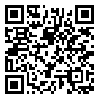BibTeX | RIS | EndNote | Medlars | ProCite | Reference Manager | RefWorks
Send citation to:
URL: http://rjms.iums.ac.ir/article-1-2439-en.html

 , Ahmad Mohammad Najad Panah Kandi
, Ahmad Mohammad Najad Panah Kandi 
 , Fereshteh Shahidi
, Fereshteh Shahidi 
 , Behnam Masoudian
, Behnam Masoudian 

Background: Physical activity can cause various hematologic changes.The purpose of the present research was to examine the effect of a maximal aerobic exercise session in the morning and the afternoon on certain hematological factors in young male athletes.
Methods: 20 athletes were randomly selected from the students of Physical Education in the University of Tehran and were divided into a morning group (N=10 20.9±0.99 years, 67.35±6.27 kg, and 180.4±4.28 cm) and an afternoon group (N=10 21±0.63 years, 67.13±9.13 kg, and 176.9±9.01 cm).The morning and afternoon groups performed the seven-station Bruce protocol from 8 to 10 A.M. and 3 to 5 P.M. respectively. The present research is quasi-experimental with a pretest-posttest design. Blood samples were collected from both groups before, immediately after, and 2 hours after the exercise. Mean and standard deviation were used for data description, and repeated measures ANOVA as well as Bonferroni test were applied for hypothesis testing at the 0.05 significance level.
Results : The result suggested significant differences in the levels of hemoglobin and erythrocytes of the two groups at different stages of blood sampling. No significant difference was observed in the level of hemoglobin and erythrocytes before and two hours after the exercise. Measurement of the level of leukocytes in the two groups and at different stages of blood sampling indicated significant differences, and both groups showed significant differences in the level of platelets at different stages of sampling (p≤0.05).Comparison of the two groups revealed that there is no significant difference between the morning and the afternoon group in the levels of hemoglobin, platelets, erythrocytes, and leukocytes before, immediately after, and two hours after the exercise.
Conclusions: Based on the results of the research, it can be argued that a maximal aerobic exercise session in the morning and the afternoon changes the level of on certain hematological factors, and that the time of exercise has no effect on the amount of change. So for having an ideal feature in hematological parameters, which play a vital role in tissue safety and oxygen supply, should be considered in the performing activities.



